

.20210527084730.png)
- Modern, user-friendly interface
- Know where projects stand at a glance
- Open Zoom calls from any dashboard
- Free 14-day trial, no commitment
“monday.com offers some of the nicest customizable dashboards in the industry.“ (Jan 2025)


.20210527084933.png)
- Collaborate with real-time chat features
- Automatic import from other productivity apps
- Track any progress and goals


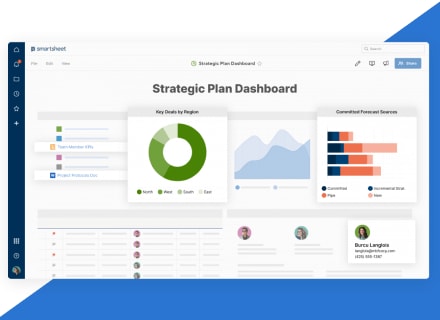
- Scalable project plans
- Advanced task tracking features
- Free 30-day trial


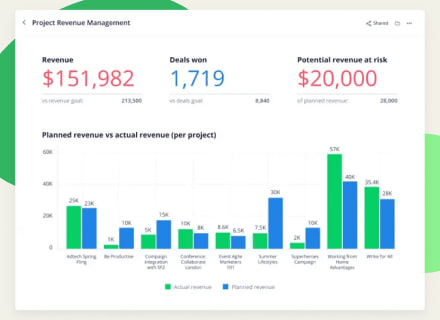
- Advanced workflow tools
- Automated workflows
- Free 14-day trial


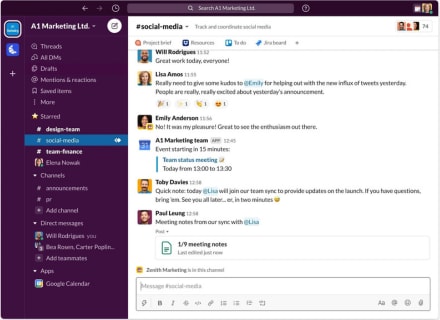
- Integrates with tools for automated workflows
- Assign and track workflow tasks
- Notifications for workflow changes & progress


.20210527085313.png)
- All-inclusive project management system
- Marketing automation features
- Freemium plan available, upgrade any time


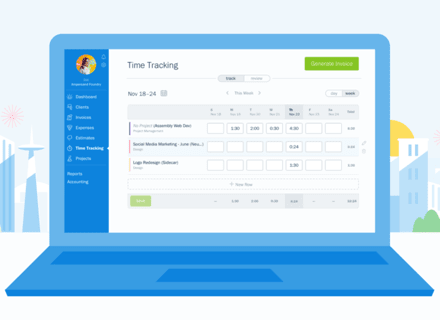
- Get 60% off for 4 months
- Easily track & interpret profitability
- Quick access to every important file


.20210527084730.png)
- Modern, user-friendly interface
- Know where projects stand at a glance
- Open Zoom calls from any dashboard
- Free 14-day trial, no commitment
“monday.com offers some of the nicest customizable dashboards in the industry.“ (Jan 2025)
Why do I need a project management software?
Project management software is a force multiplier. It helps you organize your time and resource management, create reports about business and employee performance, and get a better idea of what’s working and what isn’t. Project management software can also make team collaboration easier and more seamless than ever before.
Is it easy to use?
Project management software is designed to be easy to use, after all, that’s sort of the whole point of systems that are supposed to make your work easier. These programs shouldn’t take long for employees to master, and should have a straightforward, intuitive interface for carrying out tasks and communicating with teammates.
How steep is the learning curve?
Project management software platforms tend to have a wide range of capabilities and if you were looking to master every facet, it could take you some time. For most employees though, the basic tasks they would need to carry out shouldn’t take long to master at all, and don’t require any previous tech know-how.
How much will it cost me?
The amount you pay for project management software depends mainly on how many users you’ll have, and how many features you want. For the most basic plans, the price will be around $5 per user per month, though if you opt for the “Enterprise” plan, the per-user price will jump to $23.60 per month. If you have a lot of employees this can add up quickly. Make sure that you only order the plan that you need, so that you aren’t paying for capabilities that you don’t use.
Is my data safe with a PM software?
PM software runs online, so safeguarding your security is quite important. With your system, you’ll be able to determine which users have access to which parts of the platform, and how often you update passwords and security protocols. When selecting a provider, take a look at the security safeguards they have in place to protect users, including firewalls and encryption.
Our Top 3 Picks
- 1

 exceptional9.8
exceptional9.8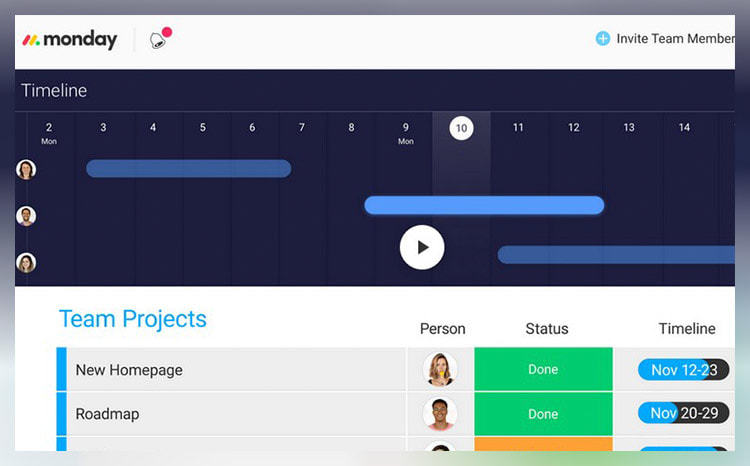 Efficient resource management tool
Efficient resource management tool- Price - From $27/month ($9/user/month)
- Team collaboration tools - Collaborative docs, updates, Zoom integration, whiteboards
- Free trial - 14 days
Free TrialEfficient resource management toolFree TrialRead monday.com Reviewmonday.com unifies your team’s tasks and processes into one user-friendly and visually pleasing interface.
As a work operating system, monday.com gives teams a clear view of responsibilities and deadlines, boosting transparency, accountability, and resource management. It features over 200 templates that can be customized with 20+ column options and various integrated apps. These tools simplify project setup and save time, helping you work more efficiently.
Additionally, you can tailor dashboards to provide detailed, team-specific views of tasks, project progression, and upcoming deadlines to enhance your team’s workflow clarity. Samyuktha Shivakumar, Global Marketing Operations Manager at Thoughtworks, reinforces this, stating that monday.com enables them “to budget the team’s time and efforts much more scientifically.”
Why we chose to review monday.com: monday.com tops our list for its combination of power, flexibility, and user-friendly design, making it ideal for even the most complex projects. It lets you seamlessly import data from spreadsheets and integrate it with your existing tools, eliminating manual data entry and freeing up time for other priorities.
Our experience: monday.com lets me implement processes that would’ve previously taken days or weeks within a few minutes. The platform’s communication tools, such as document sharing, comment annotation, and direct communication with task managers, improve collaboration within my team. The platform allows for excellent transparency for task management through easy-to-use sorting and color-coding methods.
monday.com Pros & Cons
PROS
Color-rich interface for improved organization and coordinationRobust list of supported, third-party integrationsDrag and drop project charting and timeline constructCONS
Pricing structure is fragmented and unclearCertain features (Gantt charts, timelines, etc.) are paywalled by higher-tier plans - 2

 excellent9.3
excellent9.3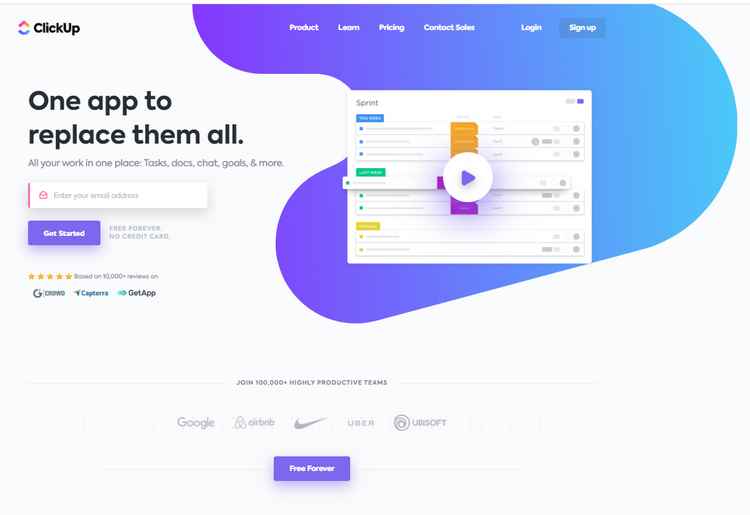 Visualize tasks and integrate apps
Visualize tasks and integrate apps- Price - From $7/month/user
- Team collaboration tools - Collaborative docs, real-time chat, file sharing, proofing
- Free trial - Free plan available
Visualize tasks and integrate appsRead ClickUp ReviewClickUp stands out with its diverse visualization tools, including Gantt charts, mind maps, and Kanban boards, which suit various project management styles.
These features make it easy to track tasks, monitor progress, and identify challenges.
The "Timeline View" offers a clear, linear way to plan schedules and create visual roadmaps. You can group tasks by assignee, priority, tags, custom fields, and more, allowing for a flexible and organized workflow. ClickUp also boosts team visibility with the "Pulse ClickApp," which shows who's online and their current tasks. Its global timer lets you track time automatically or manually, syncing seamlessly with your desktop, mobile, or browser.
Why we chose to review ClickUp: What sets ClickUp apart is its seamless integration with over 1,000 other apps, including Slack, GitLab, GitHub, and Webhooks. This capability makes it a go-to choice for development teams, allowing them to streamline their existing workflows.
Our experience: While trying out ClickUp, I was particularly impressed with ClickUp’s unique features, such as notepads, time tracking software, goal-setting tools, and pre-made templates. I also liked that I could use slash commands (typing “/” in any text field to trigger a command menu) to assign tasks, set due dates, or create subtasks quicker.
ClickUp Pros & Cons
PROS
AI CompatibleCan integrate with over 1,000 appsOffers numerous project tracking toolsCONS
Extensive feature list can be overwhelming for new usersSteep learning curve for beginners - 3

 excellent9.1
excellent9.1 Cloud-based dynamic work manager
Cloud-based dynamic work manager- Price - From $9/user/month
- Team collaboration tools - Real-time chat, forms, surveys, proofing
- Free trial - 30 days
Cloud-based dynamic work managerRead Smartsheet ReviewSmartsheet is a cloud-based work management platform that allows teams to manage dynamic work regardless of their location. With all data stored on the cloud and updated in real-time, you can track progress, identify potential issues early, and make data-driven decisions quickly.
This tool is also very user-friendly. A testament to Smartsheet’s ease of use comes from Janina Hill, Marketing Program Manager at WebEx, who notes, “Everybody has different levels of Smartsheet skills. But with drag and drop, all solutions are easy to use. Also, the workflow is much smoother when all processes are automated, and all information is in one place.”
This single-platform solution fosters interconnectivity across the entire organization, letting you share sheets with team members and effectively collaborate on projects. By centralizing data, it also reduces time spent on information management, boosting efficiency and enabling your team to focus on their primary responsibilities.
Why we chose Smartsheet: Smartsheet’s spreadsheet-like interface allows you to add new rows and columns as your project grows. This functionality can help you seamlessly expand small tasks into enterprise-wide initiatives. Additionally, its integration with apps like Slack, Teams, and Jira consolidates your data onto a single platform.
Our experience: Smartsheet allowed my team to strategically plan, implement, and monitor work on a large scale. This led to more streamlined processes, fostered innovation, and positively impacted overall business results within our own context. I found it invaluable in effectively navigating the complexities of today’s ever-changing work landscape.
Smartsheet Pros & Cons
PROS
Large template collectionEfficient content approval workflowsSurveying and form creation for both external and internal stakeholdersCONS
Latency for real-time updatesSome features have a steeper learning curve

